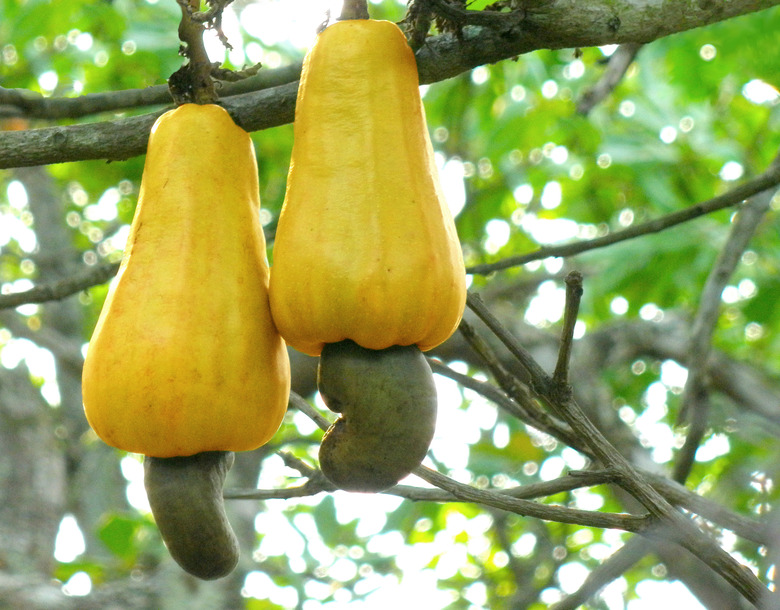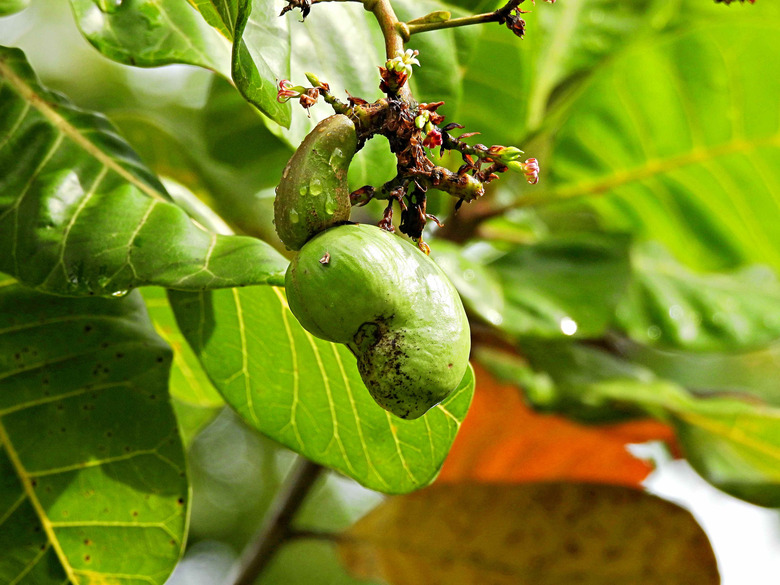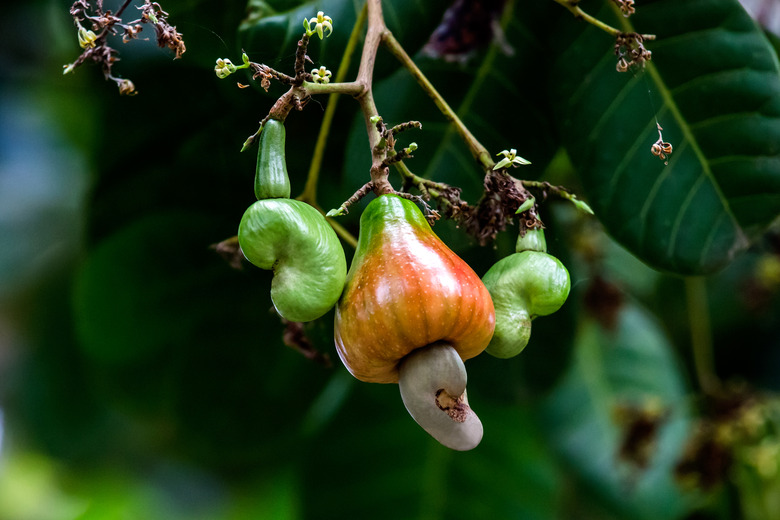How To Grow Cashews Indoors
Can You Grow a Cashew Tree Indoors?
While growing cashews indoors is technically possible, it is a difficult and potentially dangerous project even for experienced gardeners. Cashew trees (Anacardium occidentale) originated in the warm, humid tropical landscape of northeastern Brazil, and they will only grow outdoors in USDA plant hardiness zones 9b to 11.
In cooler areas, cashew trees must be grown in pots and brought indoors when temperatures cool, or they must be kept indoors year round. This can be difficult to accommodate, however, because cashew trees can reach 20 to 35 feet in height. Plus, all parts of the cashew tree, including the unripe cashew nuts, pose a threat to pets and humans, so keeping one indoors is potentially dangerous.
Tip
Cashew trees belong to the plant family Anacardiaceae, which also includes plants such as poison sumac (Toxicodendron vernix, zones 3 to 8) and poison ivy (Toxicodendron radicans, zones 4 to 10).
About Cashew Nut Trees
The cashew is an evergreen tree native to South America. They are cultivated in tropical regions around the world. The fruit of the cashew tree is unusual compared to other fruit trees. It forms a fleshy, pear-shaped fruit with a reddish accessory fruit called a cashew apple.
Each cashew apple has a grayish protuberance that is the true fruit of the tree. Inside the gray-green cashew nut shell is the edible nut, which is actually the cashew seed. Cashew nuts contain magnesium and a small amount of calcium, and they are eaten worldwide either roasted or in dishes such as curries.
Tip
Cashew trees start producing their characteristic fruit once they reach 3 feet in height, but mature trees will produce far more fruit than young trees.
Growing Cashew Trees Indoors
Cashew plants grow best in mildly acidic, sandy soil with good drainage.
When choosing a pot, make sure it has several drainage holes around the outer edge of the bottom rather than just one drainage hole in the middle. A 3-gallon pot works well for young cashew trees, but they will need to be transplanted into a larger pot as they grow.
Tip
The larger the pot, the heavier it will be to move, so it is a good idea to place it on a plant caddy with casters. The casters, or wheels, will make moving the cashew tree indoors for winter an easier task.
One of the most important aspects of learning how to grow a cashew nut tree indoors is learning where to grow it. These trees need bright light, warm temperatures and high humidity to perform well, which is not always easy when growing them indoors.
- As with most trees from tropical climates, cashew trees need plenty of light year round. Position the pot near a south-facing window where the tree will receive direct sunlight all day long.
- Temperatures above 60°F are needed to grow cashew trees. They will tolerate dips in temperature for a short period of time, but they like it warm. So try to keep indoor temperatures between 70 and 85°F.
- Forced-air heating is good for raising temperatures, but it can also dry out the air. Cashew trees need humidity above 50%, so they may need to be misted regularly to keep their foliage healthy. Alternatively, place a large, shallow tray of wet pebbles under the pot to raise humidity around the plant.
Tip
A greenhouse or solarium is an ideal place to grow a cashew tree indoors.
Caring for Cashew Trees Indoors
When caring for cashew trees indoors, be sure to consider factors such as watering needs, feeding needs and pruning needs.
Watering Needs
Cashew trees are drought tolerant when grown outdoors, but indoor trees need regular irrigation. Water whenever the soil feels dry just below the surface. Saturate the soil until water runs from the bottom of the pot.
Feeding Needs
Cashew trees are not heavy feeders, but they respond well to fertilizer, especially when being grown in pots. Provide monthly feedings with a balanced granulated fertilizer or water-soluble fertilizer applied at the amount recommended on the label.
Cashew trees grow less vigorously during the winter months, so it is fine to stop feeding from late autumn until spring.
Pruning Needs
Pruning is essential for keeping cashew trees a manageable size. Snip off the tips of the branches to the desired height using sharp, sturdy pruning shears. Make the cuts within a half inch of a growth point to encourage dense, bushy growth.
Although cashew trees can be pruned virtually year round, they bloom and produce fruit on new growth, so pruning after mid-summer may delay flowering and fruiting the following year.
Tip
Wipe down your pruning shears with household disinfectant before pruning to kill off any disease-causing pathogens.
Things to Consider When Growing Cashew Trees
There are two considerations to make before attempting to grow cashew trees indoors: the size of the tree and the danger posed by unripe cashew fruit.
Pruning to Size
Cashew trees grow quite large in the wild, reaching 20 to 35 feet in height. Although they are unlikely to reach that height when grown outside the tropics, they are still large plants that must be continually pruned to maintain a manageable size.
Pruning young cashew trees is not especially difficult, but it can be dangerous if you have sensitive skin.
Safety Matters
Pruning or physically interacting with cashew trees in any way can cause injury. All parts of the cashew tree produce an irritant that can cause dermatitis, but the unripe nut is especially dangerous.
The cashew apple fruit and unripe nuts contain high levels of phenolic lipids in the form of a sticky, reddish-brown liquid that will cause extensive blistering of the skin.


